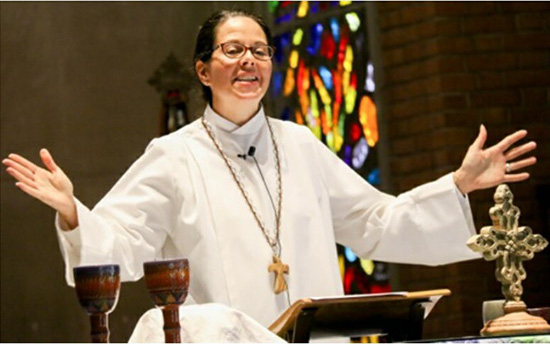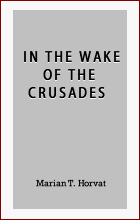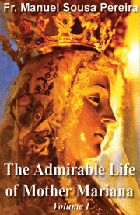What People Are Commenting
Emperor Constantine & Francis’ Deaconesses
TIA,
Hope you can read the entire piece (it's not long).
Feel free to share with others. Important material here that I think you'll find helpful in the face of rising confusion on this topic.
Please pray for me.
John Vennari

Deaconesses, Strictly Speaking, Never Existed
John Vennari
There never was nor can ever be the office of “deaconess” in the Catholic Church.
When I use the word “deaconess” in this context, I mean a female counterpart to the male office of deacon. There was never any such office.
If the term “deaconess” appears in Church history, we find it to be an imprecise term that will vary not only from age to age, but from one geographic location to the next. Father Aimé George Martimont, author of the scholarly and definitive work on the subject titled Deaconesses, An Historical Study, observes “The Christians of antiquity did not have a single, fixed idea of what deaconesses were supposed to be.” (1)
Yet on August 2 of this year, Pope Francis created a commission to study the possibility of allowing women to serve as deacons in the Catholic Church. Pursuing such a venture can only ignite further chaos in the Church and confusion among the faithful.
Extremely limited function
There was never an office of deaconess in the Latin Church. (2) We do come across references to deaconesses in various Greek and Eastern Rites. Yet the office is not uniformly found in the Oriental churches, and all mention is sporadic between the second and tenth centuries. Some Eastern Church territories, such as the church in Egypt, Ethiopia and the Maronites never accepted any office of deaconess. (3)
The women who were called “deaconesses” were not ordained in any sacramental sense of the word, but received a kind of blessing for certain ecclesiastical service. These “deaconesses” were primarily consecrated women whose work was highly restricted – usually limited assistance to other females. This included assisting women at baptisms and other services where the presence of men would have offended modesty.
“Moreover,” writes Father Martimort, “it must be even more strongly emphasized that deaconesses were never allowed to teach or preach in public.” (4)
It is of no use to appeal to St. Paul’s Epistle to the Romans in which Phoebe the “deaconess” is mentioned. The mind of the Church on this matter is summarized in the teaching of St. Thomas Aquinas. We read, “The Angelic Doctor commenting on the New Testament … saw Phoebe in the Epistle to the Romans only as one of those women who ‘served’ Christ and the Apostles, or who carried out works of charity in the manner of widows of 1 Timothy 5:10.” (5)
As for the Latin Church, we provide three ancient and authoritative texts that demonstrate how foreign was any idea in the early Church of women deaconesses, women’s ordination, and women serving in the sanctuary.
As early as the 4th century, there is the fiery directive from the bishops of the Council of Nimes in 396 A.D.:
“Equally, it has been reported by some that, contrary to the apostolic discipline – indeed a thing unheard of until now – it has been observed, though it is not known exactly where, that women have been raised to the ministry of deacons. Ecclesiastical discipline does not permit this, for it is unseemly; such an ordination should be annulled, since it is irregular; and vigilance is required lest in the future anyone should have the boldness to act in this fashion again.”
For rest of article click here.
Hope you can read the entire piece (it's not long).
Feel free to share with others. Important material here that I think you'll find helpful in the face of rising confusion on this topic.
Please pray for me.
John Vennari

If ‘deaconesses’ are approved, we will face an embarrassing imitation of contemporary Protestant practice: ministerettes in goofy robes pretending to be men, usurping activities that belong to the priest alone
John Vennari
There never was nor can ever be the office of “deaconess” in the Catholic Church.
When I use the word “deaconess” in this context, I mean a female counterpart to the male office of deacon. There was never any such office.
If the term “deaconess” appears in Church history, we find it to be an imprecise term that will vary not only from age to age, but from one geographic location to the next. Father Aimé George Martimont, author of the scholarly and definitive work on the subject titled Deaconesses, An Historical Study, observes “The Christians of antiquity did not have a single, fixed idea of what deaconesses were supposed to be.” (1)
Yet on August 2 of this year, Pope Francis created a commission to study the possibility of allowing women to serve as deacons in the Catholic Church. Pursuing such a venture can only ignite further chaos in the Church and confusion among the faithful.
Extremely limited function
There was never an office of deaconess in the Latin Church. (2) We do come across references to deaconesses in various Greek and Eastern Rites. Yet the office is not uniformly found in the Oriental churches, and all mention is sporadic between the second and tenth centuries. Some Eastern Church territories, such as the church in Egypt, Ethiopia and the Maronites never accepted any office of deaconess. (3)
The women who were called “deaconesses” were not ordained in any sacramental sense of the word, but received a kind of blessing for certain ecclesiastical service. These “deaconesses” were primarily consecrated women whose work was highly restricted – usually limited assistance to other females. This included assisting women at baptisms and other services where the presence of men would have offended modesty.
“Moreover,” writes Father Martimort, “it must be even more strongly emphasized that deaconesses were never allowed to teach or preach in public.” (4)
It is of no use to appeal to St. Paul’s Epistle to the Romans in which Phoebe the “deaconess” is mentioned. The mind of the Church on this matter is summarized in the teaching of St. Thomas Aquinas. We read, “The Angelic Doctor commenting on the New Testament … saw Phoebe in the Epistle to the Romans only as one of those women who ‘served’ Christ and the Apostles, or who carried out works of charity in the manner of widows of 1 Timothy 5:10.” (5)
As for the Latin Church, we provide three ancient and authoritative texts that demonstrate how foreign was any idea in the early Church of women deaconesses, women’s ordination, and women serving in the sanctuary.
As early as the 4th century, there is the fiery directive from the bishops of the Council of Nimes in 396 A.D.:
“Equally, it has been reported by some that, contrary to the apostolic discipline – indeed a thing unheard of until now – it has been observed, though it is not known exactly where, that women have been raised to the ministry of deacons. Ecclesiastical discipline does not permit this, for it is unseemly; such an ordination should be annulled, since it is irregular; and vigilance is required lest in the future anyone should have the boldness to act in this fashion again.”
For rest of article click here.

Posted August 11, 2016


















I appreciated your recent article on the warrior St Erlembald (here and here). He is truly a sign of contradiction against the facile sentimentalism of our unfortunate age.
The article leads me to think of other similarly anti-sentimental saints, particularly the Emperor Constantine.
I chose "Constantine" as my confirmation name, and received a couple of raised eyebrows, and some persons even went so far as to explain that the man was not a saint. However, the man has a feast day and traditions which vouch in favor of his sainthood.
In college, Constantine was referred to as the apotheosis of every historical ill and evil associated with the Catholic religion, and much was said in regards to him murdering his own son. That aside, his reputation as a saint in "Orthodox" tradition is indisputable.
Is the emperor a Catholic Saint? And should he then be referred to as "Emperor St. Constantine"? If so, I think that he would be the ultimate warrior saint who testifies against our age.
Warm regards,
S.W.
TIA responds:
Greeting S.W.,
Thank you for your amiable words regarding Prof. Plinio’s comments on St. Erlembald.
We see with sympathy your admiration for Constantine. The same people who denigrate Constantine also denigrate Charlemagne. Both Emperors have in common the protection of the Catholic Church, the donations of territories and edifices to the Church and zeal for the temporal glorification of Our Lord Jesus Christ.
It is to Constantine that the Catholic Church owes her liberation from the Catacombs in 313 with the Edict of Milan. Certainly he was influenced by his mother, St. Helena, who already had influenced her husband Constantius Clorus to take a benignant position toward the Catholics when he was governor of Gaul and Britain. Further, when Constantine was opened to believe in the miracle before the Battle of the Milvian Bridge (312), where he saw in the heavens the Cross with the words In hoc signo vinces – Under this sign you will conquer – we easily surmise the previous influence of St. Helena.
A modern revisionist history heavily influenced by the Protestants affirms that Constantine was not baptized during his lifetime. Only at his deathbed, it says, did he ask for Baptism, which he allegedly received from Bishop Eusebius of Nicomedia, a heretic Arian.
However, this version is hardly believable when we consider that according to a long and solid tradition of the Church, Constantine was duly baptized a Catholic as soon as he converted, after being cured of leprosy by St. Sylvester. His conversion, his baptism and his providential mission as well his multiple services to the Church are duly documented in countless paintings throughout history; for some of these paintings, click here, here, here, here, here, here, here, here, here, here, here, here, here, here, here & here,
After his conversion, Constantine consistently supported the Catholic Church as attested in the many edifices he legated to the Church in Italy, especially in Rome, and those he built in the Holy Land under the salutary influence of his mother.
Thus, we consider Constantine as the tradition of the Church always did until the Renaissance. It was then that criticisms against him increased significantly, inspired by those who opposed the Catholic Church having the temporal power that Constantine gave her. Dante Alighneri, for example, a radical partisan of this Ghibelline faction, portrayed Constantine in a very bad light in his Divina Commedia.
However, to provide a substantial answer to the question whether Constantine was a saint, we would need to have more time to read through and study a jungle of disinformation that the enemies of the Church have been circulating against Constantine for centuries. Unfortunately, right now we don’t have this spare time.
We hope in the future we will be able to attend your request more precisely.
Cordially,
TIA correspondence desk